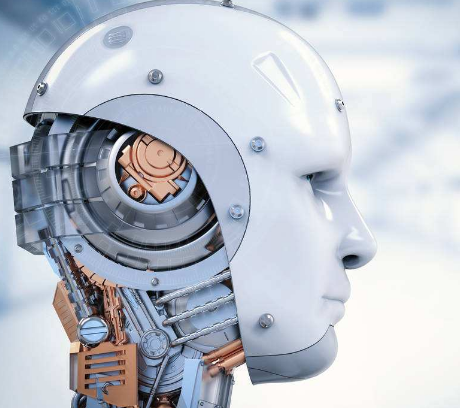ROHM Group's Blue Bishi Semiconductor Co., Ltd. (hereinafter referred to as "BLK Semiconductor") develops the world's smallest wireless power supply control chipset "ML7630 (receiver/terminal)" and "ML7631 (transmission terminal)" for wearable devices. / Charger side)".
This chipset is a wireless power supply control LSI that is suitable for wireless power supply of smart ear-mounted devices*1 such as Bluetooth® headsets that have space limitations in wearable devices. In order to support applications in smart ear-worn devices, Lanbishi Semiconductor miniaturizes the antenna (coil) by performing power transmission at a high frequency of 13.56 MHz, and integrates the functions required for charging into one chip, making It is used as a SoC*2 (system-on-chip), which greatly reduces the installation space (50% compared to the area of the MicroUSB connector). The wireless power supply of smart ear-worn devices, which was difficult to achieve in the past, not only contributes to the miniaturization of the devices, but also helps to improve the convenience of charging, the waterproofness, and the dustproofness.
Even if the battery is exhausted, the receiver's “ML7630” can use the antenna magnetic field to generate electricity and start working. In addition, although it is a small WL-CSP package that is only 2.6mm square, it achieves wireless power supply with output power up to 200mW. Not only that, but also to meet the NFC Forum Type3 Tag v1.0 ※ 3 specification, support Bluetooth® pairing and other functions based on NFC touch. Moreover, the transmitter's "ML7631" can work with 5V power provided by a USB power source such as a mobile phone battery, which is very beneficial to the development of mobile chargers.
The chipset has already begun selling samples, and production is expected to start in May 2018. The production base of the previous process was Rinpoche Semiconductor Miyagi Co., Ltd. (Miyagi Prefecture), the production base of the later process, “ML7630”, was Blue Pitt Semiconductors Miyazaki Co., Ltd. (Miyazaki Prefecture), and “ML7631” was ROHM Integrated Systems. (Thailand) Co., Ltd.
In the future, Lanbishi Semiconductor will continue to develop wireless power supply products and provide solutions for small electronic devices, contributing to the intelligent development of the society.
<background>
In recent years, the "smart ear-bearing device" worn on the ear has attracted attention as a new generation of wearable devices. However, due to the ultra-compact size of the smart ear-mounted device, terminals for power supply such as the Micro USB connector have become a problem of miniaturization and further space saving.
In this context, wireless power supply can eliminate the need for terminals, which will greatly facilitate the miniaturization of the device. In addition, there is no terminal can also improve the waterproof performance, dust resistance and other safety features, is very effective power supply system for ultra-small devices.
ROHM Group has been developing and supplying products that meet the wireless power supply standards (WPC Qi, etc.) for terminals such as smartphones and tablet PCs. As a major member of the NFC Forum, a member of the ROHM Group, LAPIS Semiconductor has been actively participating in the development of a 13.56MHz wireless power supply standard for wearable devices that require ultra-small wireless power systems.
<New Product Features>
1. Wireless power supply saves space in the power supply department
By using the 13.56MHz band wireless power supply, the chipset can use a small antenna of about 1μH, which is very helpful for the wireless power supply of wearable devices such as smart ear-worn devices, and the terminal-less configuration is beneficial to the device. Further miniaturization. For example, using an ultra-small antenna (such as the MNA4040 manufactured by MARUWA Co., Ltd.) can reduce the area by 50% (the area ratio calculated by the company) compared with the area occupied by the power supply unit using the MicroUSB connector.
2. No microcontroller, more space-saving, no need to develop software to build the system
The "ML7630" and "ML7631" integrate the functions required for power transmission and reception into one chip, enabling wireless power control without a microcontroller. Therefore, not only does software development not be required, but it also contributes to further miniaturization by saving microcontroller mounting space. You can use a dedicated PC tool to customize the charge voltage level and recharge.
3. Feature-rich support for smart ear-wearing devices
①The battery can start working without power
The receiver's "ML7630" can use the magnetic field generated by the antenna to supply power, so even if the battery is exhausted it can start working.
②200mW Output LDO and Temperature Management Charge Li-Ion Battery
The "ML7630" has a built-in LDO that can output 200mW. A charging IC is used at this output to charge the lithium-ion battery. In addition, with the built-in 10-bit AD converter and comparator, temperature management (temperature detection, threshold management), which is very important for lithium-ion batteries, can be implemented programmatically, enabling reliable charge control.
③ Meet the NFC Forum Type 3 Tag specification
The "ML7630" supports the NFC Forum Type3 Tag v1.0 specification, which reads Tag information written in the Flash ROM in the "ML7630" from devices such as smartphones that use NFC technology, and therefore supports NFC without screen operation or switching operations. Touch functions such as Bluetooth® pairing.
The
[Application area]
Wearable devices, smart ear wearing devices
<terms commentary>
※1:Hearable
Wearable devices worn on the ear, including wireless headsets and wireless in-ear headphones. In recent years, the pace of high performance has been rapidly growing in sync with smartphones.
※2: SoC (System on a Chip, System-on-a-chip, System-on-Chip)
Generally refers to an IC that integrates functions required for system operation. Here is the integration of wireless power, charging, temperature management and other functions into one chip.
※3: NFC Forum Type3 Tag v1.0
NFC (Near Field Communication) refers to a near field communication technology that communicates at a proper distance using a frequency of 13.56 MHz, and specification specifications are defined by the NFC Forum. Type3 is one of its specifications.
More consultation:
Tenco-tech


















